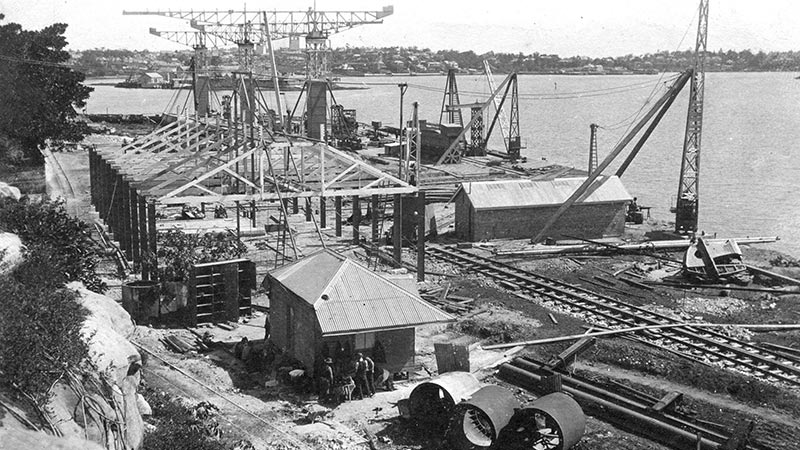Administration
Captain Gother Mann, designer and builder of the Fitzroy Dock, became the engineer-in-chief of the Civil Engineering, Dry Docks and Cockatoo Island Department when it was formed in October 1857. Control of the island as a whole in those early years is somewhat unclear. The administration of the island became the responsibility of the Chief Secretary’s Department of the NSW Government in 1855. The prison administration was taken over by the Department of Prisons in 1864, and in 1870 the dockyard was placed under the control of the engineer-in-chief of the Public Works Department, Harbours and Rivers Branch.
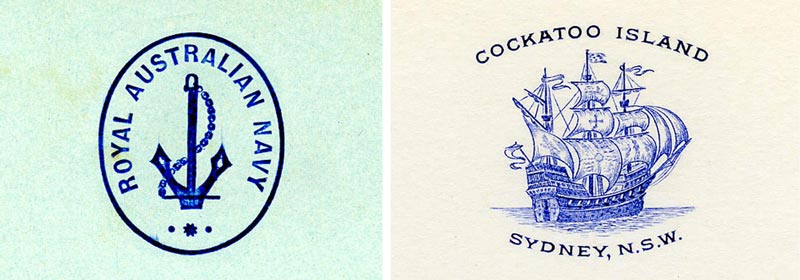
Cockatoo Island and Spectacle Island were transferred to the Commonwealth of Australia on 31 January 1913, when Cockatoo Island became the Commonwealth Naval Dockyard, administered by the Naval Board. In June 1921, the island was transferred to the Ship Construction Branch of the Prime Minister’s Department. Cockatoo Island Dockyard was run by the Shipbuilding Board of Control. In 1923 the island was transferred to the Australian Commonwealth Shipping Board.
Cockatoo Island was leased in 1933 to Cockatoo Docks & Engineering Company Limited (later known as Cockatoo Docks & Engineering Company Pty Limited (1937), Vickers Cockatoo Dockyard Pty Limited (1972) and Cockatoo Dockyard Pty Limited (1984)). The lease was renewed in 1954 and 1972. It ended on 31 December 1992.
Commonwealth control of the island was transferred in 1949 from the Australian Commonwealth Shipping Board to the Department of the Navy. When that department was abolished, responsibility went to the Department of Defence apart from a short period with the Department of Defence Support.
The Island’s Docks — Fitzroy Dock
In October 1845, the New South Wales Legislative Council recommended to the Governor, Sir George Gipps, that a dry dock be constructed in Sydney to serve the needs of Royal Navy ships in the Colony. The Governor forwarded the recommendation to London, adding ‘Cockatoo Island is the best place in Sydney Harbour, which I consider best adapted for a Naval Establishment’
The proposal was referred to the Admiralty. The Secretary replied in May 1846 supporting the proposal but the Admiralty initially declined to contribute to the cost. The Legislative Council finally approved £500 funding to get the project underway in October 1847.
With the dock to be built, the Admiralty finally agreed to bear part of the cost provided the dock was big enough to accommodate a large frigate or steamer and naval ships had priority at all times.
The dock was designed by Captain Gother Kerr Mann, the civil engineer, Cockatoo Island, who was responsible for construction of some of the prison buildings on the island. Mann had a long association with the island, becoming engineer in chief and superintendent in 1859.
The new dock was built by convicts between 1847 and 1857. It was excavated from the solid rock by blasting using gunpowder charges fired by electricity. Progress, using the convict labour, was slow and the dock was not completed until December 1857, when the survey frigate HMS Herald became the first ship to use the dock apart from a punt from the Colonial steam dredger Hercules which occupied the dock in September and October. HMS Herald was docked on 1 December 1857.
The dock was named the Fitzroy Dock after the former Governor Sir Charles Fitz Roy. The dock was soon busy with dockings of Royal Navy and Colonial vessels and a number of foreign warships. Some ships, like the French armoured corvette Atalante, which was docked in 1873, visited Sydney specifically to use the dock.
As the size of ships increased, the Fitzroy Dock was lengthened by 1870 and, again, to its final length by 1880. The original caisson was replaced in 1931. In the early 1970s the dock floor was rebuilt in concrete and new concrete keel blocks were provided. These dock blocks remain in the flooded dock today.
Between 1912 and 1991 2,304 dockings were undertaken in the Fitzroy Dock.
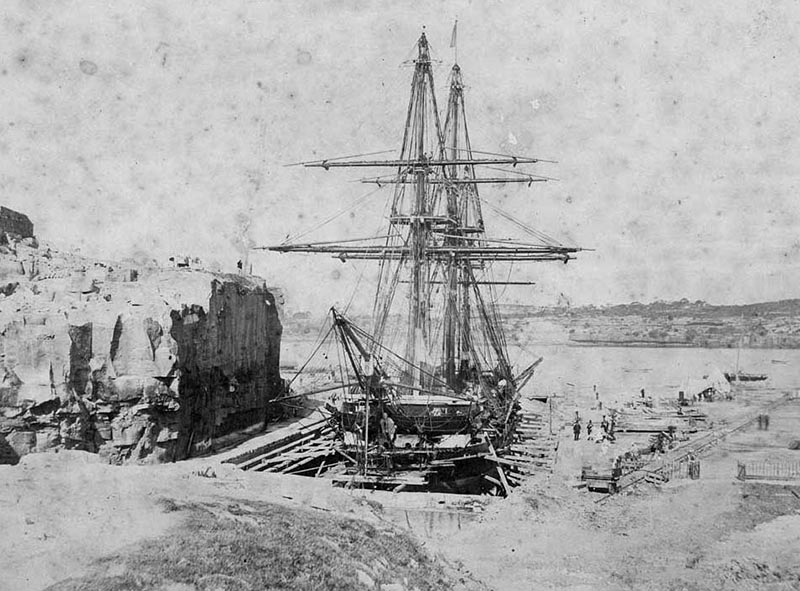
Sutherland Dock
By the late 1870s the size of ships visiting Sydney was increasing rapidly. When the final extension of the Fitzroy Dock was completed in 1880, it was long enough to take any ship in the world, but the depth of water over the dock sill was insufficient for new ships like the liner Orient which, when completed in 1879 for the Australian service, was second only in size to Brunel’s famous Great Eastern.
Rather than take the Fitzroy Dock out of service for an extended period for it to be rebuilt, in 1880 it was decided to build a new dock on Cockatoo Island suitable for the largest classes of vessels, and larger than any dock then existing in the world.
The new dock was designed by Mr J B Mackenzie under the direction of Edward Moriarty, the engineer-in-chief of the Harbours and Rivers Branch of the NSW Public Works Department, which had taken over the administration of the dockyard in 1870.
Excavation was carried out by Keogh and Johnston between October 1882 and December 1884 with the excavated material used to extend the island to the south of the site. The contract for the construction of the dock was let to a young civil engineer, Louis Samuel, who was only 23 at the time. Sadly, he died from acute peritonitis on 29 November 1889 at the age of 26 and his younger brother Edward completed the work.
The dock was completed in March 1890 at a total final cost of £267,825 and was named the Sutherland Dock after a Minister of Works in a previous NSW Government.
The Sutherland Dock was the largest single graving dock the world when it was opened, a distinction it held only briefly. The dock had to be widened in 1911 to accommodate the new flagship of the Royal Australian Navy, the battlecruiser HMAS Australia, by cutting away the lower altars for most of the length of the dock. It was lengthened in 1928 to allow the new cruisers HMAS Australia and HMAS Canberra to be docked.
The original wrought-iron caisson was replaced in 1975, and in the early 1970s a large part of the dock floor was rebuilt in concrete. A pit to accommodate the sonar domes of the guided missile destroyers Perth, Hobart and Brisbane was also constructed in the dock floor at the head of the dock in the early 1970s.
Between 1912 and 1991 3,614 dockings were undertaken in the Sutherland Dock.
Docking records for the period 1857 to 1912 are incomplete however, based on existing records, it is estimated that vessels were docked or slipped at Cockatoo Island on some 12,000 occasions between 1857 and 1991, more than at any other location in Australia.
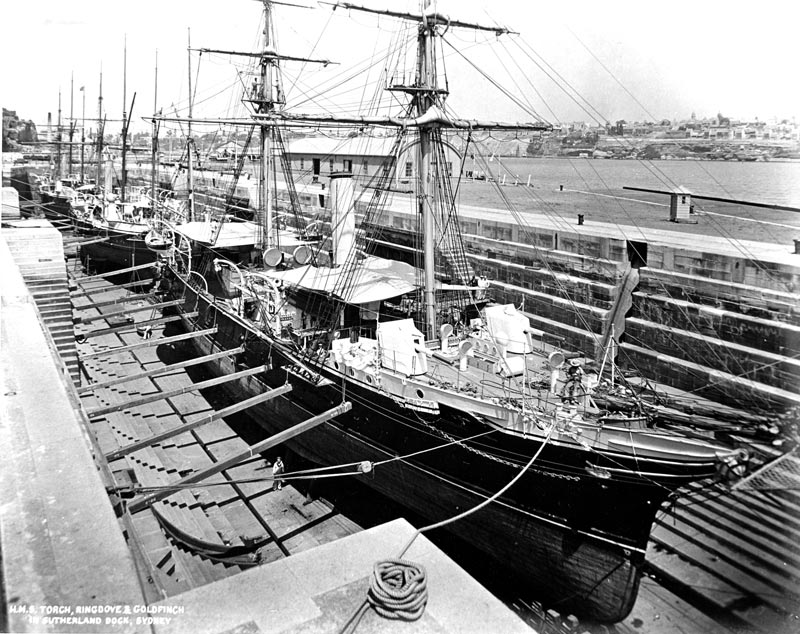
AFD 17
The Admiralty floating dock AFD 17 arrived in Sydney from Iceland in 1945 to support the British Pacific Fleet. It was moored at the Fitzroy Wharf in 1946. Purchased by the Commonwealth from the Royal Navy in 1948, the dock was used for commercial and naval dockings for nearly twenty years. By the time it was condemned and scrapped in 1964, 641 dockings had been undertaken. The two 5-ton travelling cranes from the dock were refitted with longer jibs and were used at the Fitzroy Dock until the dockyard closed in 1991. They are still there.
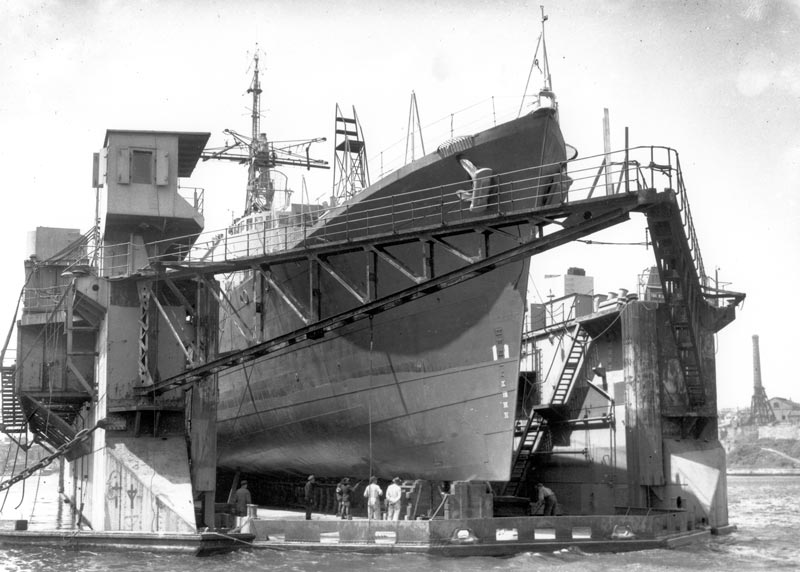
Patent Slipway
In 1909 a 500-ton patent slipway was constructed on the eastern shore of the island next to the general store, in the area occupied for many years by shipbuilding slips. Two smaller patent slipways were also incorporated in the shipwright’s shop built south of the Sutherland Dock in 1910. They remain there today. The large patent slip was removed in 1943 and the area filled. A new 250-ton slip was built beside Timber Bay.
The patent slipway was used on some 1,500 occasions after 1912. Records for the smaller slipways are incomplete, and many more small craft than the 510 recorded after 1912 would have used these slipways.

Slave Dock
The Slave Dock SD3201 was designed and built at Cockatoo Island to accommodate the Royal Australian Navy’s Oberon-class submarines during refit. It was used in conjunction with the Sutherland Dock and was usually berthed at the Bolt Shop Wharf. It was also berthed at the Sutherland Wharf at times, usually whilst grit-blasting operations were being carried out.
The dock was commissioned in 1975, and was transferred to Garden Island in 1991 for use by Australian Defence Industries for the last two Oberon-class submarine refits. It was later sold.
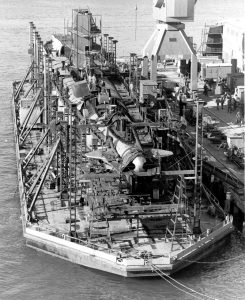
Dockyard Facilities
Cockatoo Dockyard continually evolved and changed to meet the needs of its customers and changing technology. However, most development occurred in four or five periods spanning, in total, about five decades.
Early Development
As the Fitzroy Dock was being built, one of the finest dockyard buildings was constructed, the Engineers Workshop (Building 138), completed in the early 1860s. In the two decades which followed, there was little change to the dockyard apart from the construction of a workshop shed on the reclaimed ground south of the Fitzroy Dock and the predecessor to the Destroyer Wharf in the south-east corner of the island. It is possible that the shed was used for shipbuilding (which began in 1870), although most of this activity appears to have been concentrated on the shoreline east of the Engineers Workshop.
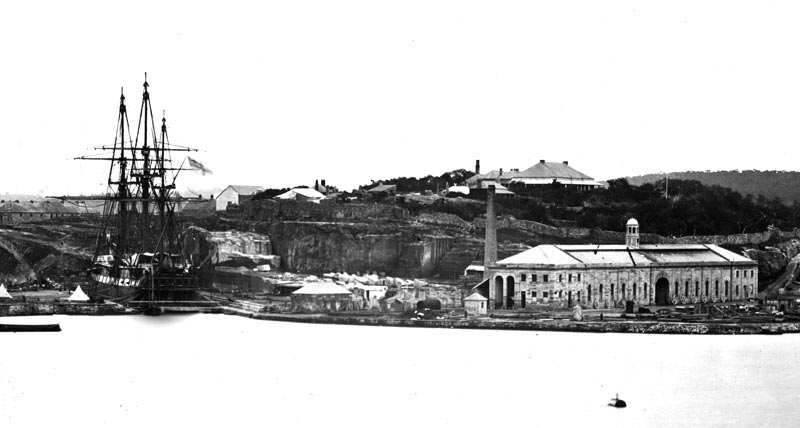
Approaching Federation
The completion of the Sutherland Dock in 1890 greatly expanded the dockyard area, and by the turn of the century, further buildings were erected on the eastern shore. The General Store survives from this period.
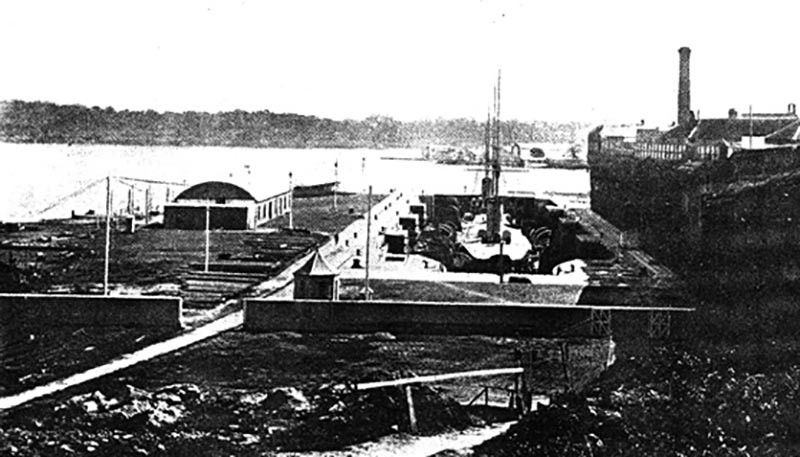
Final NSW Development
In 1904, the NSW Government began to further improve the facilities, and more work was begun after 1908. The machine and fitting shops were extended, and two new shipbuilding slipways were constructed south of the Fitzroy dock, together with steel-working facilities and cantilever cranes. This work was substantially completed by 1910. Towards the end of the period of NSW Government control work began in 1912 on the development of the northern shipyard and another shipbuilding slipway was built south of the Sutherland Dock next to the boatshed.
